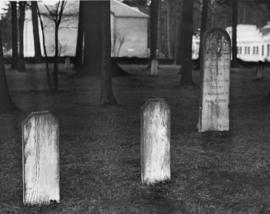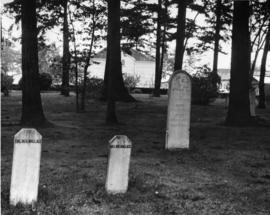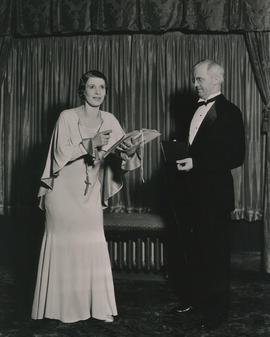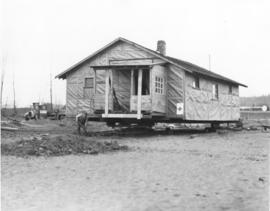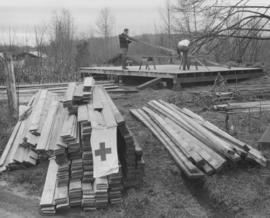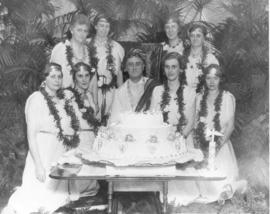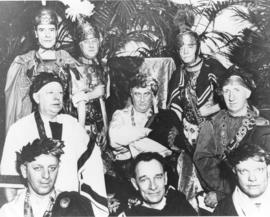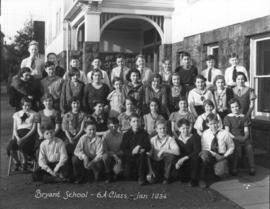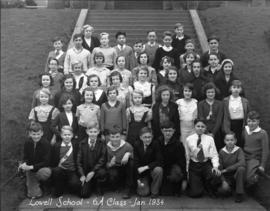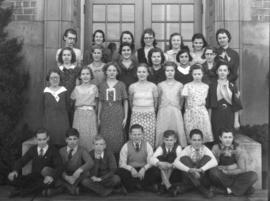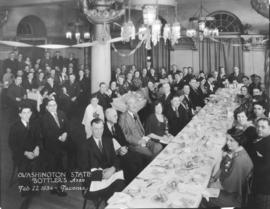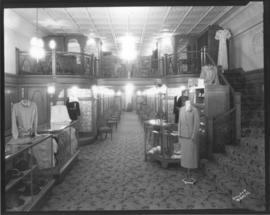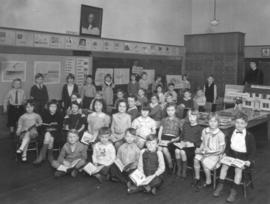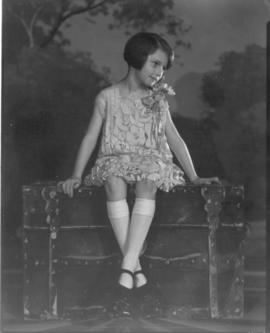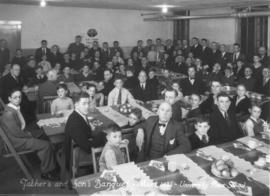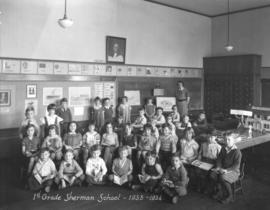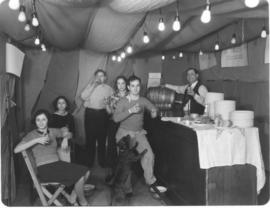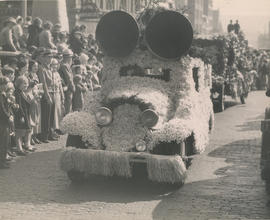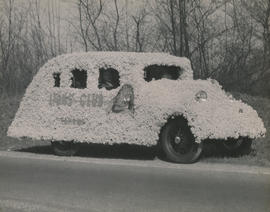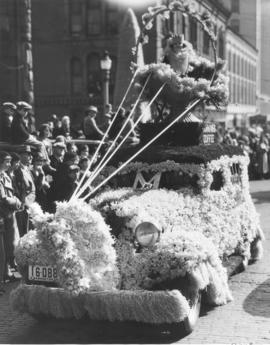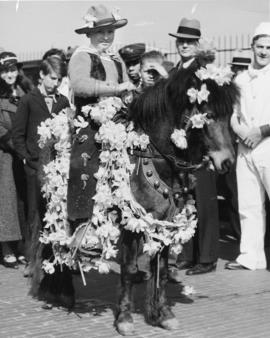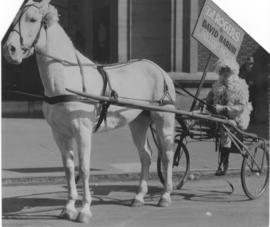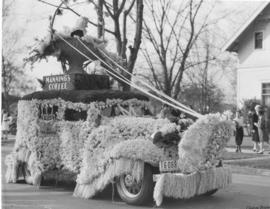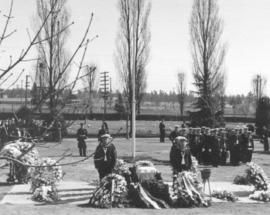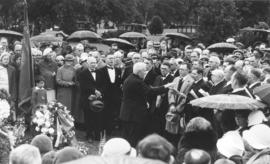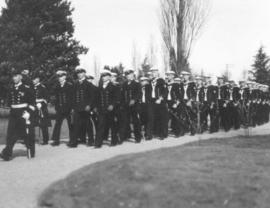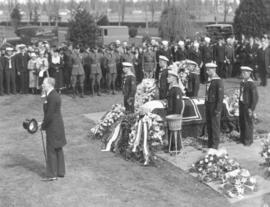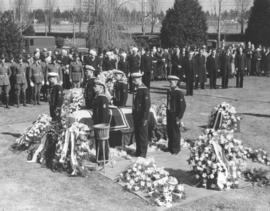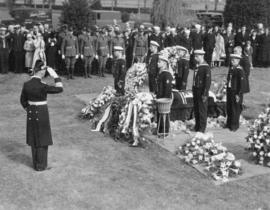President Franklin D. Roosevelt celebrates his first birthday in the White House with a "toga, toga" party. Copy of photograph donated to Tacoma Public Library by Leon Sides. In 1934, critics of Roosevelt's New Deal reforms categorized him as a "prickly Julius Caesar." For his 52nd birthday, his buddies donned togas and attended a party costumed Roman style. Gathered for the party were members of Roosevelt's Cuff Links Club and their spouses. The Club was composed of people to whom he had presented cufflinks in 1920 when he was a vice presidential candidate. Roosevelt's first lady, Eleanor, is pictured second from left in the standing row as the Delphic Oracle. Also pictured is daughter Anna, to the right of the President, as a vestal virgin. Mrs. Anna Dall on January 18, 1935 married John Boettiger, Seattle newspaperman. (TNT 11/5/1978)
Roosevelt, Franklin Delano, 1882-1945; Roosevelt, Anna Eleanor, 1884-1962; Costumes--Roman; Presidents--United States; Presidents' spouses--United States; Birthday parties--1930-1940;
